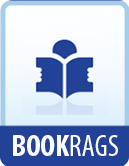This is, I think, in many ways Lamb’s most remarkable poem.
Hood’s own poem on the same event, printed in Memorials of Thomas Hood, by his daughter, 1860, has some of the grace and tenderness of the Greek Anthology:—
Little eyes that
scarce did see,
Little
lips that never smiled;
Alas!
my little dear dead child,
Death is thy father,
and not me,
I but embraced
thee, soon as he!
* * * * *
Page 55. To Bernard Barton.
These lines were sent to Barton in 1827, together with the picture. On June 11, Lamb wrote again:—
“DEAR B.B.,
“One word more of the picture verses, and that for good and all; pray, with a neat pen alter one line—
“His learning seems to lay small stress on—
“to
“His learning lays no mighty stress on,
“to avoid the unseemly recurrence (ungrammatical also) of ‘seems’ in the next line, besides the nonsense of ‘but’ there, as it now stands. And I request you, as a personal favor to me, to erase the last line of all, which I should never have written from myself. The fact is, it was a silly joke of Hood’s, who gave me the frame, (you judg’d rightly it was not its own,) with the remark that you would like it because it was b-----d b-----d [the last line in question was ’And broad brimmed, as the owner’s calling’] and I lugg’d it in: but I shall be quite hurt if it stands, because tho’ you and yours have too good sense to object to it, I would not have a sentence of mine seen that to any foolish ear might sound unrespectful to thee. Let it end at ‘appalling.’”
Line 1. Woodbridge. Barton lived at Woodbridge, in Suffolk, where he was a clerk in the old Quaker bank of Dykes & Alexander.
Line 15. Ann Knight. Ann Knight was a Quaker lady, also resident at Woodbridge, who kept a small school there, and who had visited the Lambs in London and greatly charmed them.
Line 16. Classic Mitford. The Rev. John Mitford (1781-1859) was rector of Benhall, in Suffolk, near Woodbridge, and a friend of Barton’s, through whom Lamb’s acquaintance with him was carried on. Mitford edited many poets, among them Vincent Bourne. He was editor of the Gentleman’s Magazine from 1834 to 1850.
Footnote. Carrington Bowles. Carington Bowles, 69 St. Paul’s Churchyard, was the publisher of this print, which was the work of the elder Morland, and was engraved by Philip Dawe, father of Lamb’s George Dawe (see the essay “Recollections of a late Royal Academician,” Vol. I.).
Lines 26, 27, 28. Obstinate ... Banyan. It was not Obstinate, but Christian, who put his fingers in his ears (see the first pages of The Pilgrim’s Progress). Lamb had the same slip of memory in his paper “On the Custom of Hissing at the Theatre” (Vol. I.).




